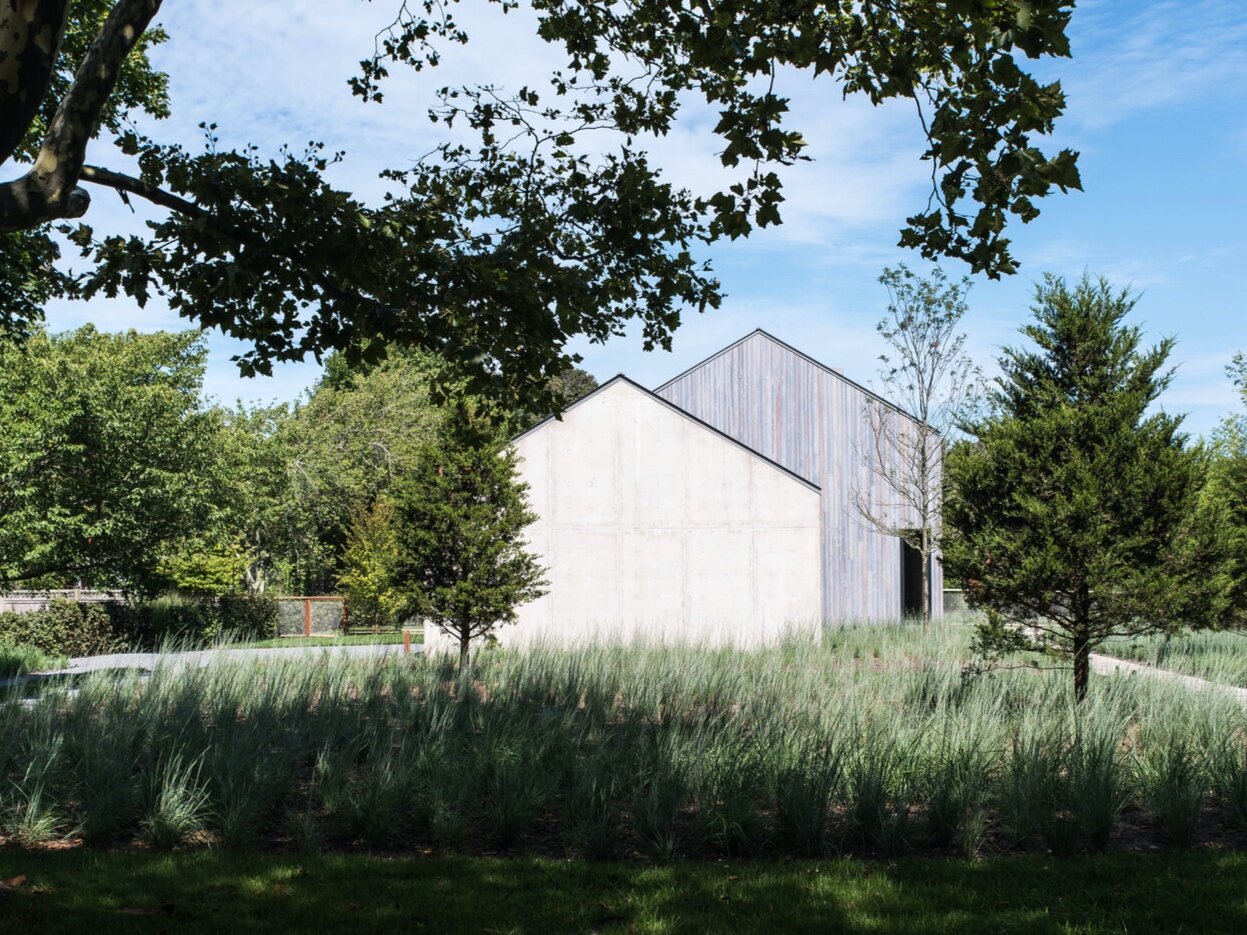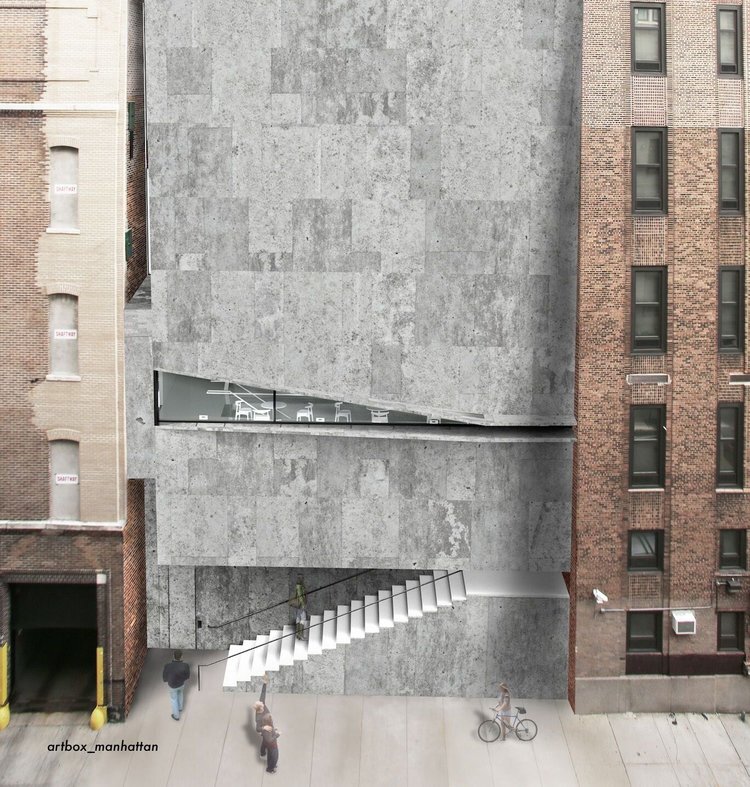Founded in 1996, and located in New York, MB Architecture provides full architectural services across a wide range of building types and environmental conditions. We have envisioned, designed, and built pre-fabricated homes; custom-crafted private residences; art installations; commercial and cultural spaces; places of worship; multi-family housing; specialty museums; town plans and public spaces.
The ‘Arc House’, ‘House in the Lanes’, ‘Amagansett Modular’, and ‘Driftwood House’ are some of the more known examples of our single-family residential work; while ‘Farmside Housing’, the ‘Art Box’, ‘New Herrick Park’, and ‘Park Erratica’ illustrate our ongoing research in community-oriented projects.
Since our inception, we have been dedicated to designing total environments where buildings are a component of a larger canvas that includes nature, the neighborhood and community. Whether designing individual homes, or multi-family ones, we aim to weave a fabric of buildings and open spaces that enriches neighborhoods and fosters the growth of the individual and the community.
We design with materials and methods that perform well over time, age gracefully, and require little maintenance. The use of passive systems —and sustainable design— which take advantage of solar orientation, wind direction, and landscaping is fundamental to our process.
Our built work is dotted in numerous locations on the East End of Long Island (from Southampton to Montauk), in New York, and Germany; and we have envisioned larger-scaled projects for New Orleans, China, Austria, Kenya, Papua New Guinea, and Chile.
ArtBox, Manhattan, NY
New Herrick Park, East Hampton, NY
Residences in the Hamptons
Over the past 30 years, we have collaborated with and culled together a team of exceptional craftspeople, builders, engineers and designers who share our enthusiasm and expertise in bringing a variety of complex projects to life — and who share our dedication to exceptional craftsmanship, attention to detail, considerate client relations, and comprehensive service.
From our first house in East Hampton, built in 1996 by John Caramagna, a master builder who also built the houses of architect Charles Gwathmey, to the many dozens of projects since, we work with materials and methods of construction that last well beyond their initial picture-ready newness; that weather naturally; require least maintenance; and age gracefully.
Permitting
Each East End township follows both the New York State Residential Building Code and their own set of zoning laws. Understanding these is paramount in both the design process, and the creation of construction documents that will receive approvals from the various agencies involved in the permitting process. Whether we are working with the DEC, ZBA, DOB or any other agency that may have jurisdiction over a property, we have the experience of successfully navigating extremely complex projects through permitting, and eventual completion.
View of Manhattan and the U.N. with 'Sitting Statue'
A Note on Sustainability
We don't just design buildings; we create integrated environments. In fact, the built (or the building) in our work, in particular in our recent design projects, is a mere component, albeit a vital one, of a total environment. In the case of our short-listed proposal for a 600 person Baha'i Temple at the foot of the Andes, for example, the experience of the complete cycle of nature and nature-based uses led to an architectural design that relies on the geological features of the site for its spatial definition and completion. This fundamental shift in attitude, a reversal of the conventional relationship between buildings and nature whereby buildings are a component of much larger Architecture of the Environment, characterizes our approach to design.
In 2008, we built the first green-roof in Montauk. This minimized storm water runoff, added additional insulation, and made the roof an inviting and livable space. For our next project, the Arc House, we went beyond planting sedum on the roof and buried much of the structure within the landscape. This took advantage of the naturally temperate ground temperature and substantially decreased the house’s energy consumption. In addition to the naturally regulated subterranean part of the house, the rounded shape of the above-ground portion of the structure created a natural convection in the space and stabilized the temperature of the room. Most recently, for the the Sayres House and Hanging Gardens, we created multiple landscaped terraces adding more green-space to the property than we removed by building the structure. As architects, our specific role is to demonstrate alternative methods of planning and construction that promote our total ecological philosophy while helping preserve, sustain and regenerate the environment.
As practitioners, our challenge is to apply this attitude to every project, large or small, affordable or luxurious. While the physical results vary, we consistently aim for the maximization, wherever possible, of contiguous natural habitats. By clustering buildings and increasing managed landscapes, we leave nature to perform its self-healing, self-cleaning processes. We like to explore site layouts that reduce or otherwise draw attention to the impact of buildings on the environment. In our proposal for 90 units of affordable housing in Norwalk, Connecticut, for example, alternative building technologies are integrated with a site plan that reverses suburban and wasteful development while creating a model for the regeneration of a neighborhood. The use of passive systems which take advantage of solar orientation, wind direction, and landscaping are fundamental to our decision making process while the examination of efficient and alternative materials and building technologies is a fulfillment of that promise.
To find out more, or to discuss your next project, send us an email.
Landscaped Terraces and sunken driveway at the Arc House, East hampton, NY.











